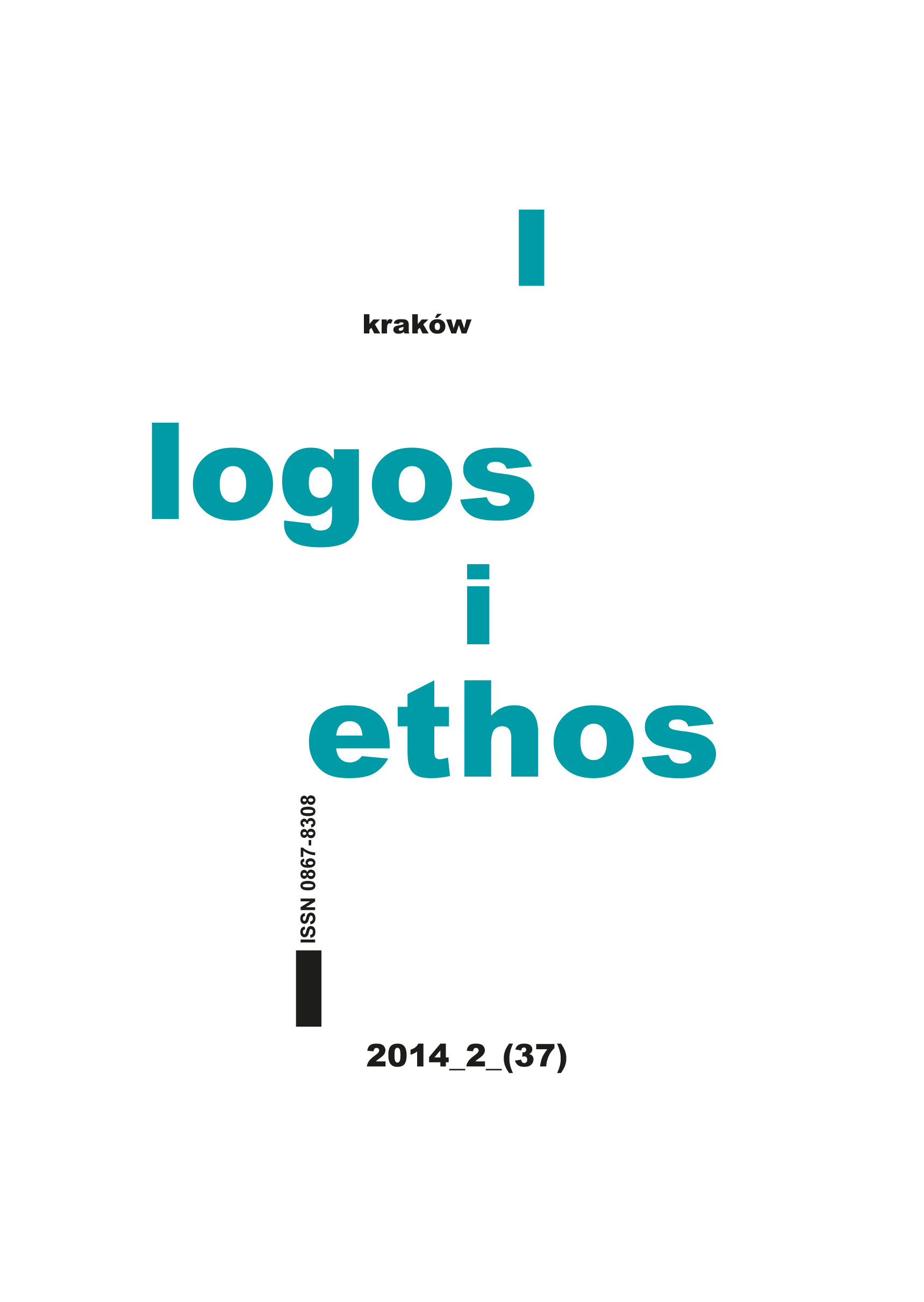The hermeneutic symbol and the symbolization of a work of art according to Hans-Georg Gadamer
DOI:
https://doi.org/10.15633/lie.795Keywords:
a work of art, autopresentation, hermeneutic symbol, religious (methaphysical) symbolAbstract
H.-G. Gadamer distinguishes a hermeneutic symbol from both religious (metaphysical) symbol and a purely conventional one. In the religious aspect a symbol represents what it itself is not. Its essence is to replace and make present what is symbolized. According to Gadamer, there are fundamental differences between a religious (metaphysical) symbol and a hermeneutic symbol (work of art). A work of art, as an example of a hermeneutic symbol, brings an increase of being to what it represents. It does not refer us to what is symbolised by it, but reveals its content (albo: what is enclosed in it). It is thus a specific transcendence in immanence. Due to its essence, which is auto-presentation, a hermeneutic symbol is an endless game of revealing and hiding. Auto-presentation establishes hermeneutic symbolization of every work of art, as well as of every being. What is manifested in the auto-presentation of a work of art (of a being) refers to what is hidden in it.
A symbolization of a work of art (of a being) has also a syntactic dimension. In the process of cognition no being has just a single meaning, it is always connected with the meaning of other beings. There is a specific system of interconnections. It is particularly noticeable in the speech, where every word is understandable only in the context of other words. Also, an existential function can be distinguished within a hermeneutic symbol. A work of art calls to change the life of the one who met it – by revealing the truth about himself and the truth about the world he lives in.
References
Cassirer E., Wesen und Wirkung des Symbolbegriffs, Darmstadt 1983.
Chmielowski F., Sztuka, sens, hermeneutyka, Kraków 1993.
Dupré L., Inny wymiar, tłum. S. Lewandowska, Kraków 1991.
Durand G., Wyobraźnia symboliczna, tłum. C. Rowiński, Warszawa 1986.
Gadamer H.-G., Aktualność piękna. Sztuka jako gra, symbol i święto, tłum. K. Krzemieniowa, Warszawa 1993.
Gadamer H.-G., Ästhetische und religiöse Erfahrung, [w:] tenże, Gesammelte Werke. Ästhetik und Poetik I, t. 8, Tübingen 1993, s. 143–155.
Gadamer H.-G., Człowiek i język, tłum. K. Michalski, [w:] tenże, Słowo, rozum dzieje, tłum. M. Łukasiewicz i K. Michalski, Warszawa 2000, s. 52–62.
Gadamer H.-G., Estetyka i hermeneutyka, tłum. M. Łukasiewicz, [w:] tenże, Rozum, słowo, dzieje, tłum. M. Łukasiewicz i K. Michalski, Warszawa 2000, s. 132–141.
Gadamer H.-G., Prawda i metoda, tłum. B. Baran, Warszawa 2004.
Gadamer H.-G., Wiek filozofii. Rozmowy z Riccardem Dottorim, tłum. J. Wilk, Wrocław 2009.
Grondin J., Hans-Georg Gadamer. Biografia, tłum. J. Wilk, Wrocław 2007.
Heidegger M., Bycie i czas, tłum. B. Baran, Warszawa 1994.
Kant I., Krytyka władzy sądzenia, tłum. A. Landman, Warszawa 1986.
Platon, Uczta 192 E, [w:] tenże, Dialogi, tłum. W. Witwicki, t. 2, Kęty 1999, s. 29–89.
Przyłębski A., Symbol w Gadamerowskiej filozofii sztuki, [w:] Symbol a rzeczywistość, red. B. Andrzejewski, Poznań 1996, s. 117–131.
Ricoeur P., Egzystencja i hermeneutyka. Rozprawy o metodzie, tłum. E. Bieńkowska, Warszawa 1985.
Ricoeur P., Symbolika zła, tłum. S. Cichowicz i M. Ochab, Warszawa 1986.
Seils M., Symbol, [w:] Historisches Wörterbuch der Philosophie, red. J. Ritter i K. Gründer, t. 10, Basel 1998, s. 710–739.
Sołtysiak M., Istnienie dzieła sztuki a jego tożsamość hermeneutyczna według Hansa-Georga Gadamera, „Logos i Ethos” 2013 nr 2 (35), s. 7–25.
Stróżewski W., Symbol i rzeczywistość, [w:] tenże, Istnienie i sens, Kraków 1994, s. 438–464.
Symbol, [w:] Mały słownik terminów i pojęć filozoficznych, red. A. Podsiad i Z. Więckowski, Warszawa 1983, s. 377.
Downloads
Published
Issue
Section
License
Copyright (c) 2015 Marek Sołtysiak

This work is licensed under a Creative Commons Attribution 4.0 International License.
Authors who publish with this journal agree to the following terms:
- Authors retain the copyright and full publishing rights without restrictions, and grant the journal right of first publication with the work simultaneously licensed under a Creative Commons Attribution 4.0 International License that allows others to share the work with an acknowledgement of the work's authorship and initial publication in this journal.
- Authors are able to enter into separate, additional contractual arrangements for the non-exclusive distribution of the journal's published version of the work (e.g., post it to an institutional repository or publish it in a book), with an acknowledgement of its initial publication in this journal.
- Authors are permitted and encouraged to post their work online (e.g., in institutional repositories or on their website) prior to and during the submission process, as it can lead to productive exchanges, as well as earlier and greater citation of published work (See The Effect of Open Access).

